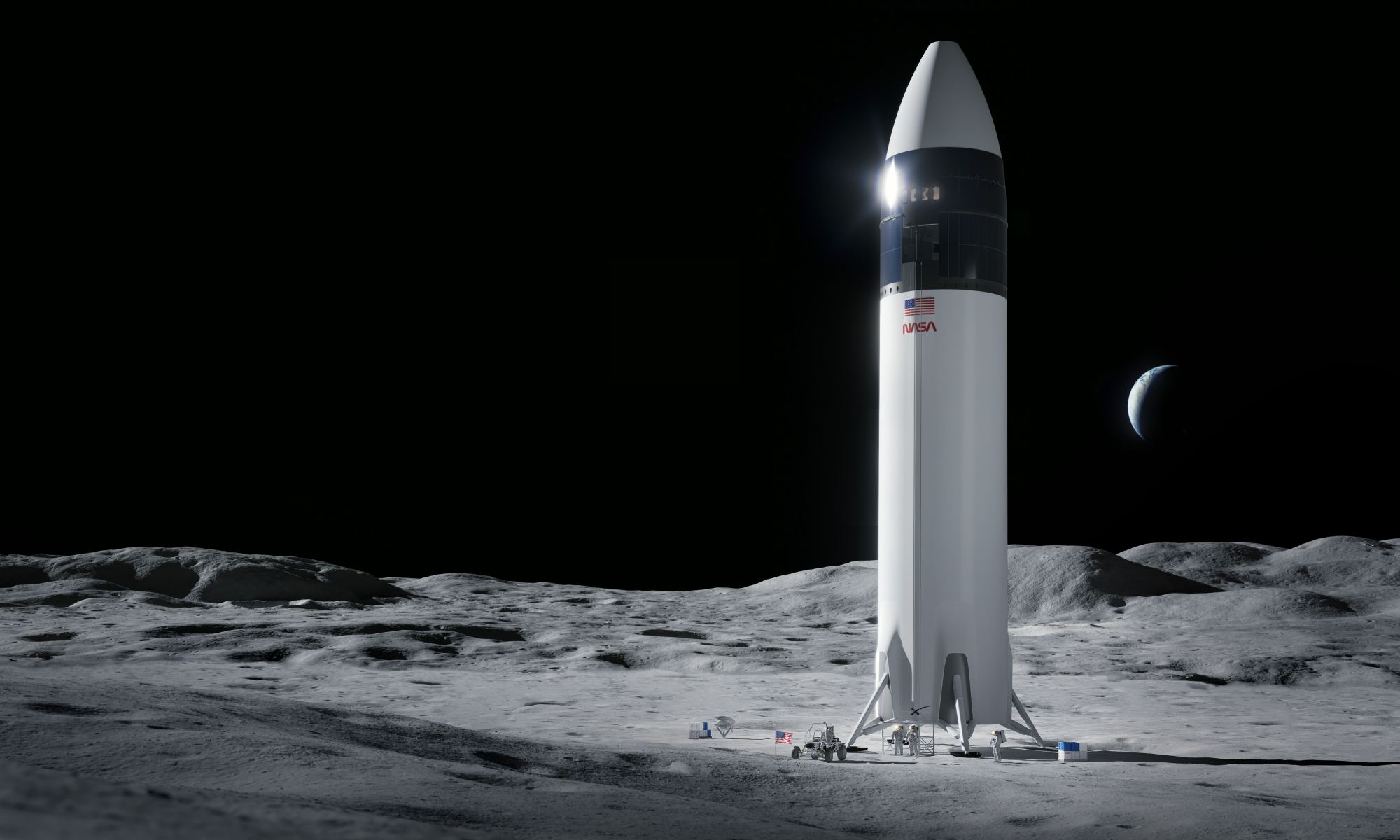As part of the Artemis program, NASA is gearing up to send the “first woman and next man” to the Moon by 2024. Central to this is the development of the Space Launch System (SLS), the most powerful rocket since the Saturn V that took the Apollo astronauts to the Moon, and the Orion spacecraft. But after these elements transport astronauts to Lunar orbit, they will need a lander to take them to and from the surface.
For this reason, NASA contracted a number of commercial partners to develop a Human Landing System (HLS). After much consideration, NASA announced on Friday, April 16th, that they had selected SpaceX to continue developing their concept for a lunar lander. When American astronauts return to the Moon for the first time in fifty-two years, it will be a modified version of the Starship that will bring them there.
The SpaceX concept was one of three finalists selected by NASA in April of 2020 to develop an HLS proposal as part of Appendix H: Human Landing System of the Next Space Technologies for Exploration Partnerships (NextSTEP-2) program. Along with Blue Origin and Dynetics, the finalists were awarded contracts worth $967 million for the 10-month base period. With this latest award, SpaceX has earned a firm and fixed-price milestone-based contract worth a total of $2.89 billion.
SpaceX’s HLS concept calls for a fully-integrated vehicle similar in design to the Starship – the orbiter element of a fully-reusable two-stage super-heavy launch system the company is currently developing. During the HLS base period of performance, SpaceX engineers have been working closely with NASA experts to create a lander design that meets NASA’s performance requirements and human spaceflight standards.
The HLS Starship takes advantage of the company’s tried and true Raptor engine design, as well as the company’s experience with launch vehicles and spacecraft – the Falcon 9 and Falcon Heavy rockets and the Dragon vehicles. The HLS Starship design also includes a spacious cabin for the four astronauts and two airlocks to accommodate extra-vehicular activities (EVAs) – aka. “moonwalks.”
As Kathy Lueders, NASA’s associate administrator for Human Exploration and Operations Mission Directorate (HEOSM), said in a NASA press release:
“With this award, NASA and our partners will complete the first crewed demonstration mission to the surface of the Moon in the 21st century as the agency takes a step forward for women’s equality and long-term deep space exploration. This critical step puts humanity on a path to sustainable lunar exploration and keeps our eyes on missions farther into the solar system, including Mars.”
When the Artemis III mission launches (currently scheduled for October of 2024), the SLS and Orion will send four astronauts on a multi-day journey to lunar orbit. At this point, two crew members will transfer to the SpaceX HLS to make the final leg of the journey and descend to the lunar surface. After about a week spent exploring the surface, the astronauts will launch aboard the lander to rendezvous with Orion and head back to Earth.
This will be a historic event, and not just because it will be the first time that boots are placed on the lunar surface since the last mission of the Apollo Era. This was Apollo 17, which took place in December of 1972, and saw astronauts Eugene Cernan and Harrison Schmitt spend three days on the lunar surface and conduct the longest “moonwalk” to date (also the longest).
This time around, at least one of the two astronauts to land on the Moon will be a woman. Another goal of the Artemis program includes having the first person of color walk on the lunar surface. Said Lisa Watson-Morgan, the program manager for HLS at NASA’s Marshall Space Flight Center:
“This is an exciting time for NASA and especially the Artemis team. During the Apollo program, we proved that it is possible to do the seemingly impossible: land humans on the Moon. By taking a collaborative approach in working with industry while leveraging NASA’s proven technical expertise and capabilities, we will return American astronauts to the Moon’s surface once again, this time to explore new areas for longer periods of time.”

Alongside the Appendix H award, NASA plans to implement a competitive procurement for the development of crewed lunar transportation services. In keeping with their goal of creating a program of “sustained lunar exploration” that will continue well beyond the Artemis program, this service will provide human access to and from the lunar surface using the Lunar Gateway.
Earlier this year, NASA announced that it had contracted with SpaceX to provide launch services for the Gateway’s core elements. These include the Power and Propulsion Element (PPE) and the Habitation and Logistics Outpost (HALO), both of which are scheduled to launch from Launch Complex 39A at NASA’s Kennedy Space Center atop a Falcon Heavy rocket no earlier than May of 2024.
Further Reading: NASA

